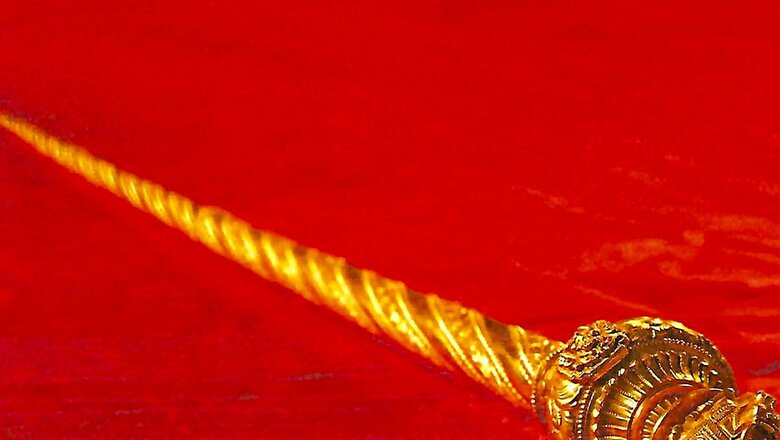
views
The ‘historical and sacred Sengol (sceptre)’ received by first Prime Minister of India Jawaharlal Nehru, symbolising the transfer of power from the British to India in 1947, and set to be installed in the new Parliament House on May 28 by Prime Minister Narendra Modi, harks back to Tamil history from the Sangam age over 2,000 years ago.
The ceremonial sceptre was kept in the Nehru Gallery of the Allahabad Museum and has been moved to Delhi for its installation in the new Parliament building. Made of silver with a coat of gold, the historical sceptre will be installed near the chair of the Lok Sabha Speaker.
Vummidi Ethirajulu, 96, and Vummidi Sudhakar, 88, two people involved in the making of the original Sengol, are expected to attend the new Parliament building inauguration function.
The elderly duo were also featured in a special video explaining the significance and history of the sceptre that was shared by Union Information and Broadcasting Minister Anurag Thakur on Twitter.
A historic moment for India!Witness an extraordinary event encapsulating the inseparable bond between our democratic ideals and the spiritual essence that permeates every aspect of our society.
The sacred Sengol, a revered artifact gifted by priests from Tamil Nadu on the eve… pic.twitter.com/UuLpMw5dvY
— Anurag Thakur (@ianuragthakur) May 24, 2023
Directed by Priyadarshan and the photography done by Santhosh Sivan, the video explains how C Rajagopalachari had requested the leader of the Thiruvavaduthurai Adheenam — a non-Brahmin Saivite order — in Tamil Nadu (then Madras Presidency) to sanctify the transfer of power to the Indian people from the British just as how it was done during Chola times.
According to the video, the leader of the Adheenam immediately commissioned jeweller Vummidi Bangaru Chetty for the preparation of the ‘Sengol‘ (five feet in length). The official website of Vummidi Bangaru Jewellers mentions the sceptre and also carries a rare photograph of Nehru that is also featured in the short film on Sengol.
The word ‘Sengol’ is derived from the Tamil word ‘Semmai‘, meaning ‘righteousness’. The ornamental sceptre is crowned with the sacred Nandi, with its unyielding gaze. The Nandi on top of the ‘Sengol‘ is symbol of ‘nyaya.’
















Comments
0 comment